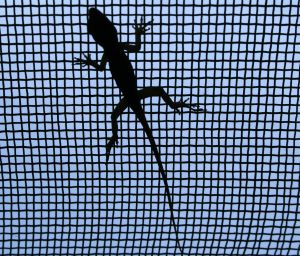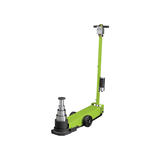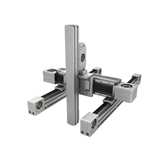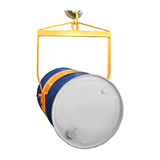University of California, Berkeley, biologists and engineers have been studying how lizards manage to leap successfully even when they slip and stumble. They found that lizards swing their tails upward to prevent them from pitching head-over-heels.
But after the team added a tail to a robotic car named Tailbot, they discovered that counteracting the effect of a slip is not as simple as throwing your tail in the air. Instead, robots and lizards must actively adjust the angle of their tails just right to remain upright.
"We showed for the first time that lizards swing their tail up or down to counteract the rotation of their body, keeping them stable," team leader Robert J. Full, UC Berkeley professor of integrative biology said.
"Inspiration from lizard tails will likely lead to far more agile search-and-rescue robots, as well as ones having greater capability to more rapidly detect chemical, biological or nuclear hazards."
Agile therapod dinosaurs like the velociraptor depicted in the movie "Jurassic Park" may also have used their tails as stabilisers to prevent forward pitch, Full said.
"Muscles willing, the dinosaur could be even more effective with a swing of its tail in controlling body attitude than the lizards," Full said.
"Learning in the context of original discovery, finding out something that no one has ever known before, really motivated me," former UC Berkeley integrative biology undergraduate Talia Moore said, now a graduate student in the Department of Organismic and Evolutionary Biology at Harvard University.
"This research-based lab course...showed me how biologists and engineers can work together to benefit both fields."
Full's research over the past 20 years has revealed how the toe hairs of geckos assist them in climbing smooth vertical surfaces and, more recently, how their tails help to keep them from falling when they slip and to right themselves in mid-air.
The new research tested a 40-year-old hypothesis that the two-legged theropod dinosaurs the ancestors of birds used their tails as stabilisers while running or dodging obstacles or predators. In Full's teaching laboratory, students noticed a lizard's recovery after slipping during a leap and thought a study of stumbling would be a perfect way to test the value of a tail.
In the CiBER lab, Full and six of his students used high-speed videography and motion capture to record how a red-headed African Agama lizard handled leaps from a platform with different degrees of traction, from slippery to easily-gripped.
They coaxed the lizards to run down a track, vault off a low platform and land on a vertical surface with a shelter on top. When the friction on the platform was reduced, lizards slipped, causing their bodies to potentially spin out of control.
When the researchers saw how the lizard used its tail to counteract the spin, they created a mathematical model as well as Tailbot — a toy car equipped with a tail and small gyroscope to sense body position to better understand the animal's skills.
With a tail but no feedback from sensors about body position, Tailbot took a nose dive when driven off a ramp, mimicking a lizard's take-off. When body position was sensed and fed back to the tail motor, however, Tailbot was able to stabilize its body in midair.
The actively controlled tail effectively redirected the angular momentum of the body into the tail's swing, as happens with leaping lizards, Full said.
Tailbot's design pushed the boundaries of control in robotics in an area researchers call inertial-assisted robotics. When Tailbot was dropped nose-down, it was able to right itself before it had dropped a foot.
"Engineers quickly understood the value of a tail."
"Robots are not nearly as agile as animals, so anything that can make a robot more stable is an advancement, which is why this work is so exciting."
Full and his students are now investigating the role of the tail in controlling pitch, roll and yaw while running.
The work was funded by the National Science Foundation, including the NSF's Integrative Graduate Education and Research Traineeship (IGERT) program, and the Micro Autonomous Systems Technologies (MAST) consortium, a large group of researchers funded in part by the U.S. Army Research Laboratory that is focused on creating autonomous sensing robots.




-160x160-state_article-rel-cat.png)


















